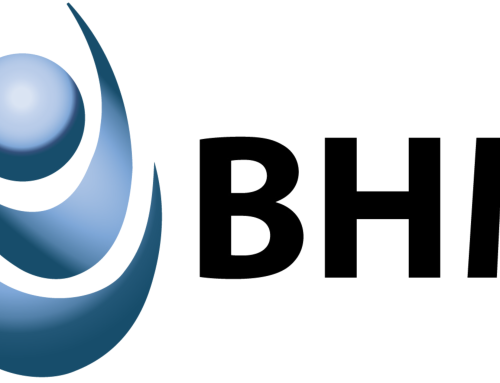Preparedness is the name of the game within the hospital environment in 2015. If you’re not always on your toes, you can get broadsided by a shift that turns your organization upside down.
So how do you prepare for the big trends expected to hit hospitals in the remainder of 2015? Read on.
1. Technology and Self-Care
With increasing technological advances that make it easier for the average (albeit tech-savvy) patient to monitor his or her health on the go, more and more healthcare providers are leveraging these opportunities to provide better, more in-depth care. Everything from medication adherence to heart health can be monitored thanks to the help of these devices. According to a PwC study, more and more physicians are getting more on board with these advances, too.
The bottom line: Embrace the technology–don’t fight it. Empower your patients to be an active part in their own care.
2. Medical Necessity and Specialty Drugs
You’ve seen the trend of rapid growth within the specialty pharmacy industry–but what does that mean for hospitals? Well, for one thing, it means the increase in demand equals higher costs, and more selective approval from payers. Insurance companies are opting for higher copays for these high-touch, high-price drugs, and are putting a close watch on providers who work with them to ensure medical necessity is a top priority.
The bottom line: Hospitals can expect higher demands placed on physician reporting, and patients needing specialty drugs can expect higher bills and limited access.
3. Increased Volume
As more and more patients become insured, they are increasing the volume of work at their local hospitals. This increase in demand can mean more revenue, but it also means a higher demand for resources: Space, Staff, and Availability. Hospitals who can’t meet these rising demands miss out on new opportunities.
The bottom line: An influx of patients can be a good thing. Scale up to make sure potential patients aren’t going elsewhere for their care.
Address the Trends Expected to Hit Hospitals in 2015
With the “big three” in mind, hospital leaders have a lot to consider and transform into positive action. In your next executive session, bring up these questions for discussion:
1. How can we incorporate new technology for patients who are open to self-monitoring?
2. How do we address the demand for specialty drugs and make it easier for physicians to handle reporting for medical necessity?
3. Are we properly managing our resources to address the increase in patient volume? Where can we improve?
These questions bring important concepts front and center–concepts that often get set aside for more pressing issues and a set agenda. Allow time for conversation and see what you discover.








RT @BHMHealthcare: 3 Big Trends Expected to Hit Hospitals in 2015: Preparedness is the name of the game within the hospital envir… http:/…
@elcaminohosp We thought you might enjoy our blog post “3 Big Trends Expected to Hit #Hospitals in 2015!” http://t.co/eEPqfA6H6X
@ERHF1 We thought you might enjoy our blog post “3 Big Trends Expected to Hit #Hospitals in 2015!” http://t.co/eEPqfA6H6X
@IU_Health We thought you might enjoy our blog post “3 Big Trends Expected to Hit #Hospitals in 2015!” http://t.co/eEPqfA6H6X
@VCU We thought you might enjoy our blog post “3 Big Trends Expected to Hit #Hospitals in 2015!” http://t.co/eEPqfA6H6X
@MountSinaiNYC We thought you might enjoy our blog post “3 Big Trends Expected to Hit #Hospitals in 2015!” http://t.co/eEPqfA6H6X
@kansashospitals We thought you might enjoy our blog post “3 Big Trends Expected to Hit #Hospitals in 2015!” http://t.co/eEPqfA6H6X
@MikeAndersonMD We thought you might enjoy our blog post “3 Big Trends Expected to Hit #Hospitals in 2015!” http://t.co/eEPqfA6H6X
@Akram_Boutros We thought you might enjoy our blog post “3 Big Trends Expected to Hit #Hospitals in 2015!” http://t.co/eEPqfA6H6X
@KBrown_Piedmont We thought you might enjoy our blog post “3 Big Trends Expected to Hit #Hospitals in 2015!” http://t.co/eEPqfA6H6X
@wyattwdecker We thought you might enjoy our blog post “3 Big Trends Expected to Hit #Hospitals in 2015!” http://t.co/eEPqfA6H6X
@drexdeford We thought you might enjoy our blog post “3 Big Trends Expected to Hit #Hospitals in 2015!” http://t.co/eEPqfA6H6X
@RalphJohnsonII We thought you might enjoy our blog post “3 Big Trends Expected to Hit #Hospitals in 2015!” http://t.co/eEPqfA6H6X
@advocatecolleen We thought you might enjoy our blog post “3 Big Trends Expected to Hit #Hospitals in 2015!” http://t.co/eEPqfA6H6X
@drpatestlukes We thought you might enjoy our blog post “3 Big Trends Expected to Hit #Hospitals in 2015!” http://t.co/eEPqfA6H6X
@vivianleemd We thought you might enjoy our blog post “3 Big Trends Expected to Hit #Hospitals in 2015!” http://t.co/eEPqfA6H6X
@BHMHealthcare You were right! Great Post
@BHMHealthcare Nice article!
RT @BHMHealthcare: 3 Big Trends Expected to Hit Hospitals in 2015: Preparedness is the name of the game within the hospital envir… http:/…